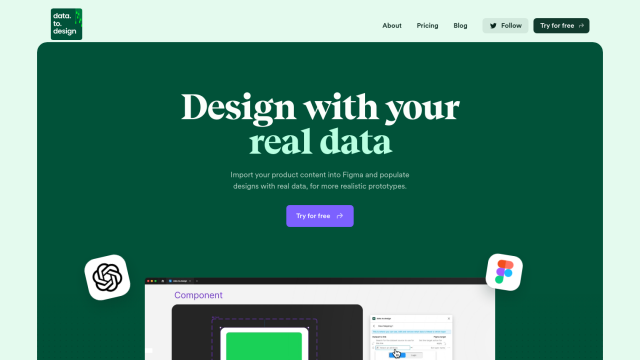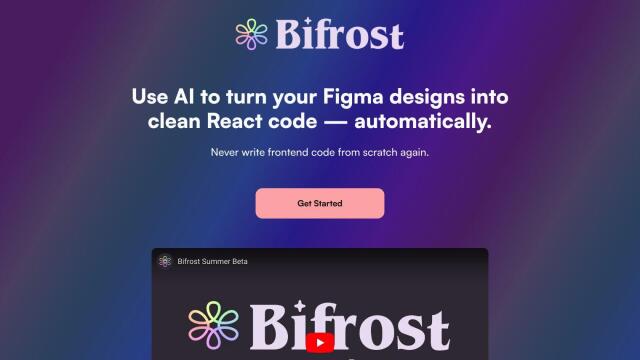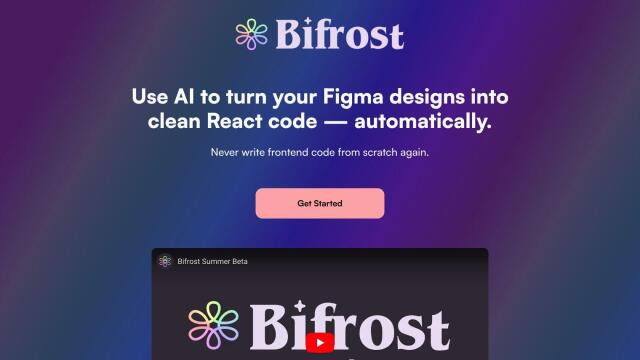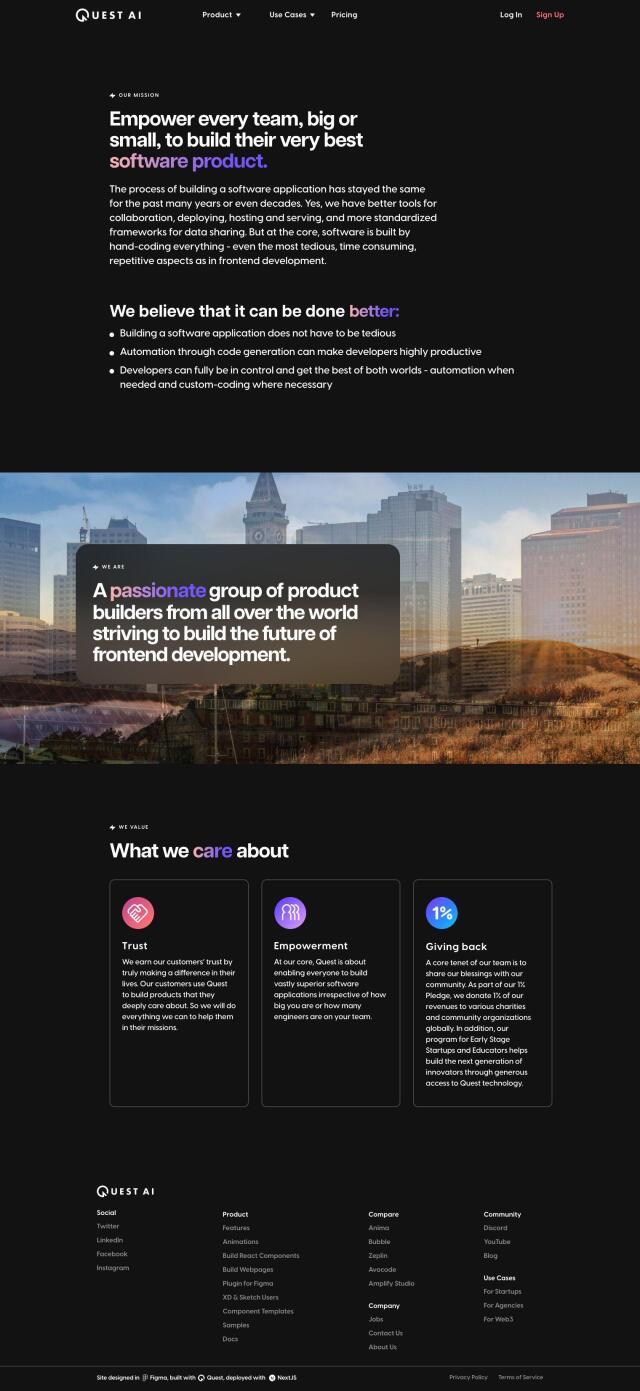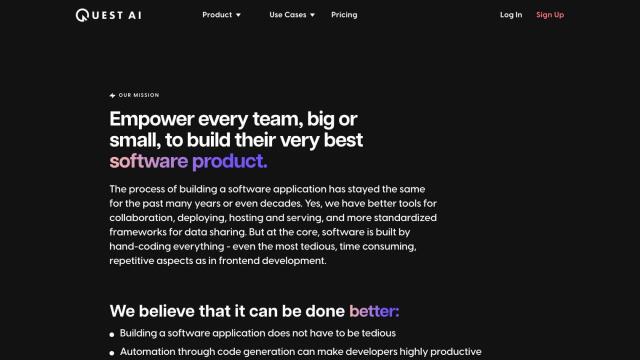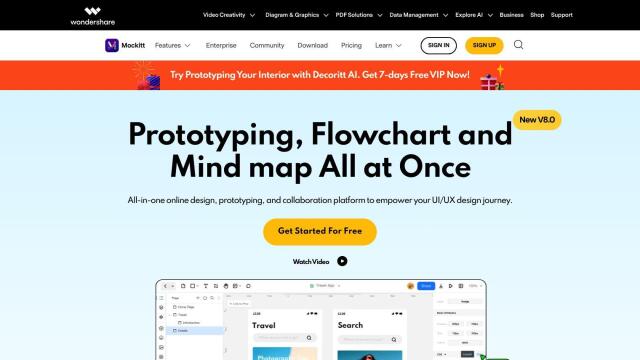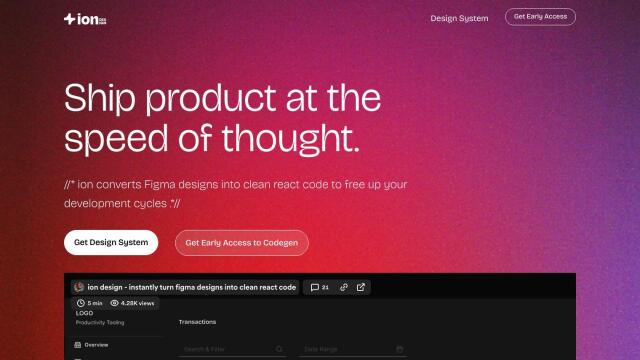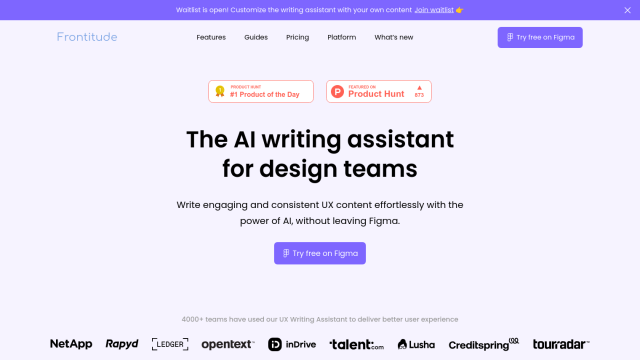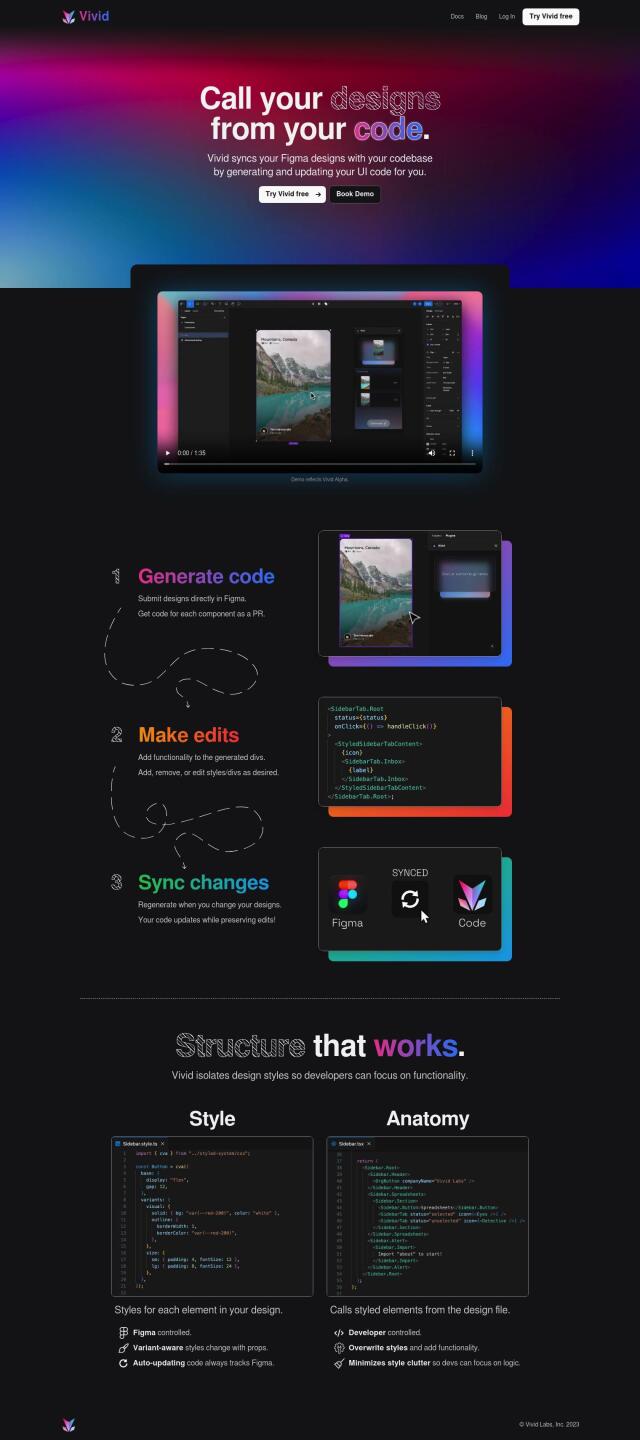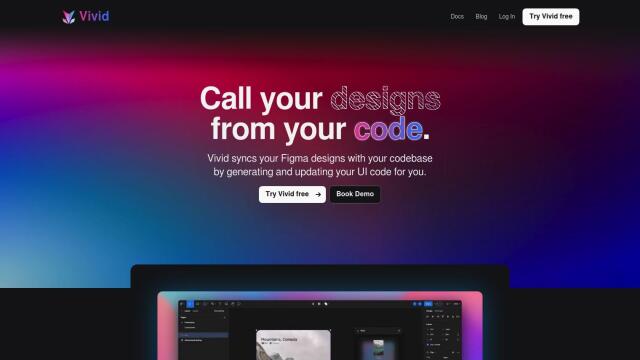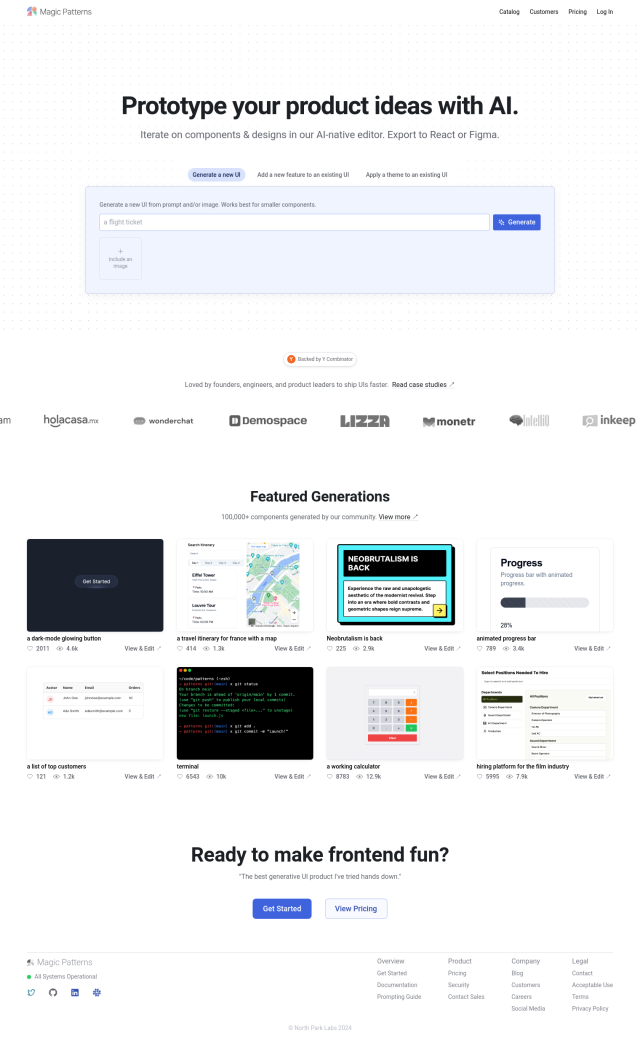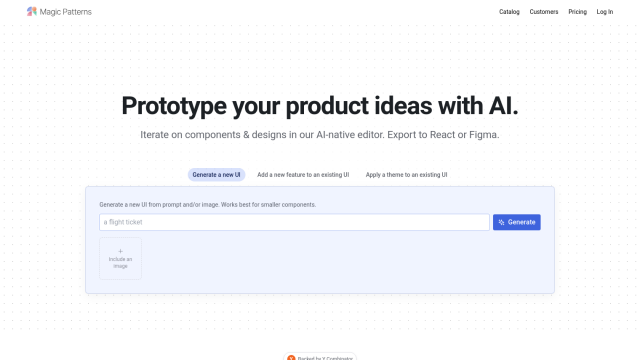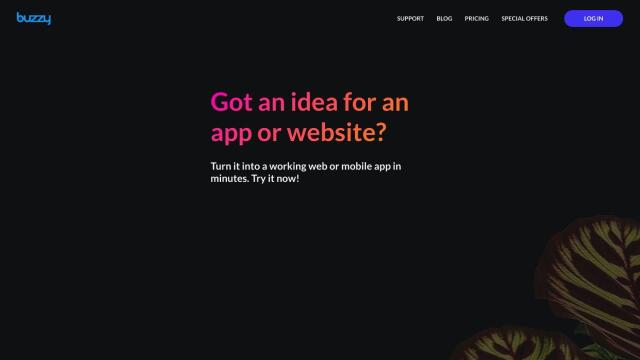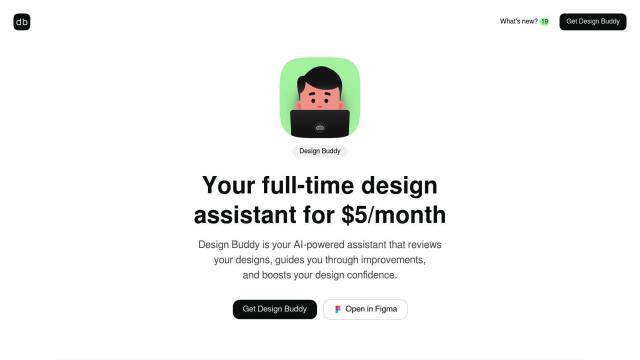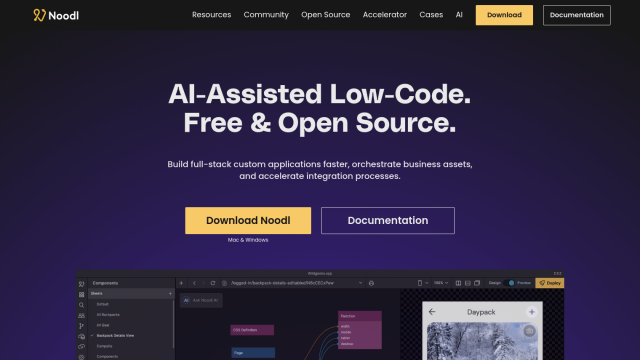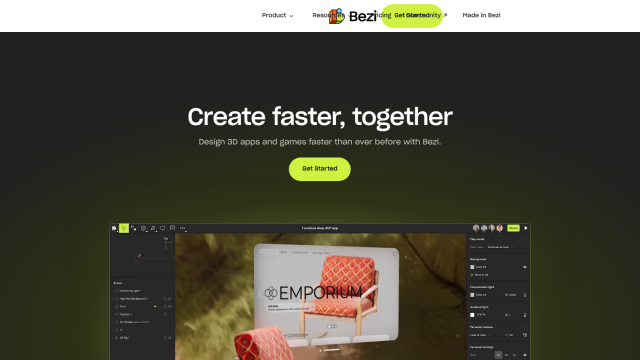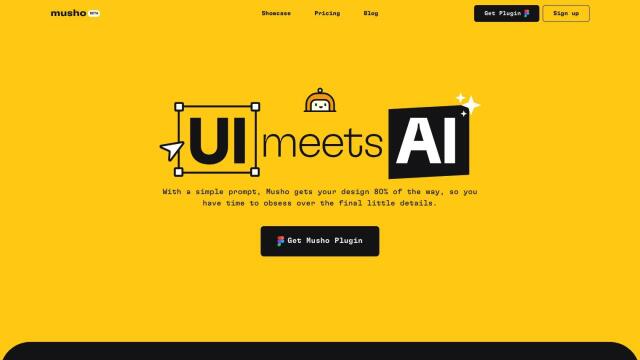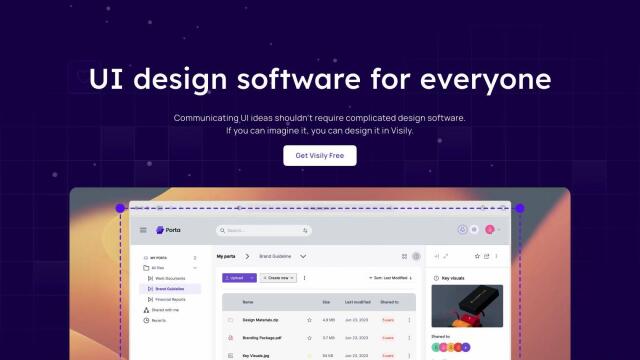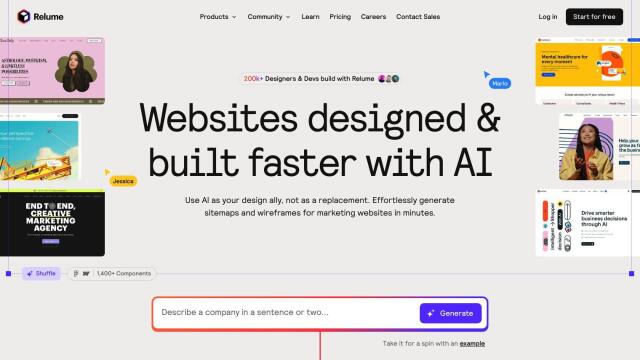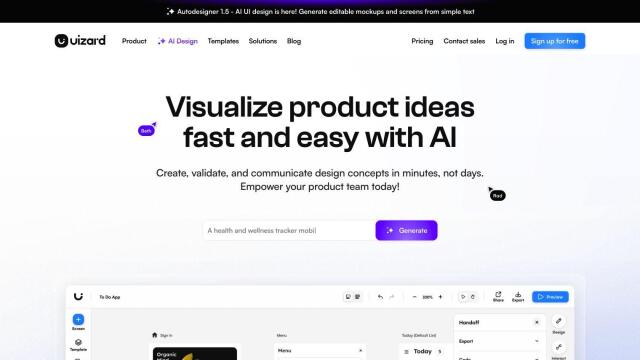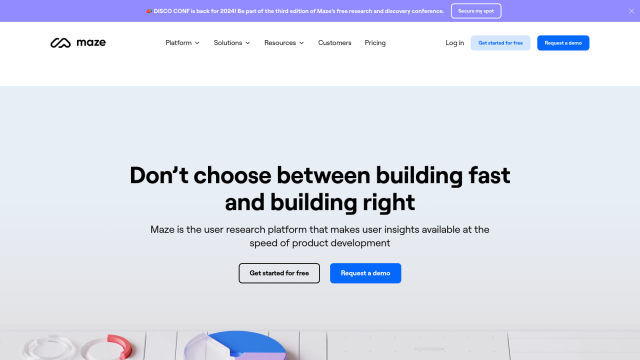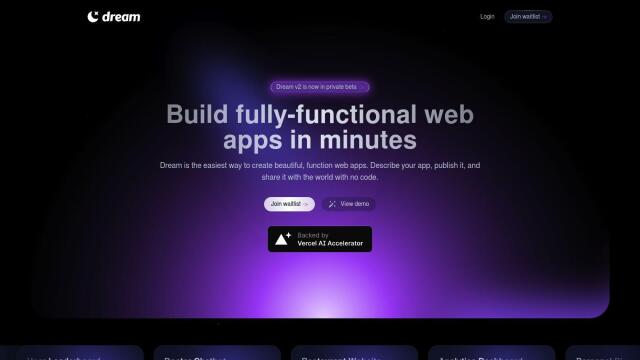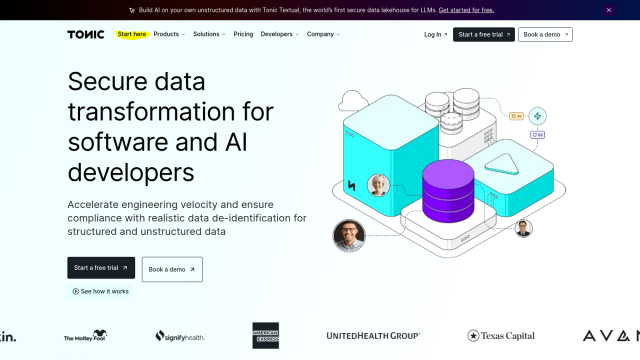
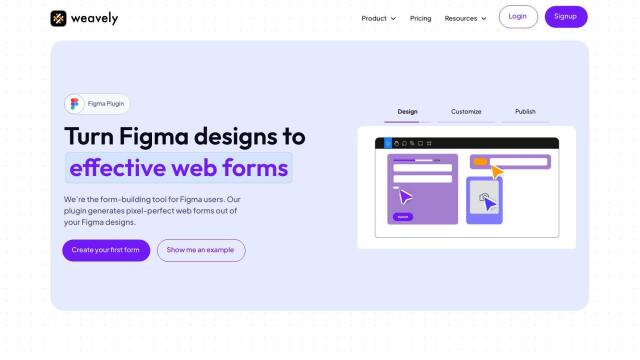
Weavely
If you're looking for a data.to.design alternative, you might want to check out Weavely. This tool integrates with Figma to build interactive, web-based forms with no programming. It has features like conditional logic, AI-generated forms and data analysis that can be brought into Figma. It also can be connected to Notion, Airtable, Google Sheets and other services with Zapier integration, making it a good choice for user research, marketing and lead generation.

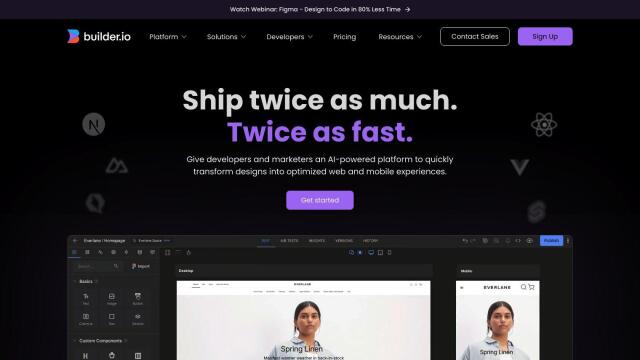
Builder.io
Another option is Builder.io. It lets developers and marketers turn Figma designs into web and mobile apps fast by using AI to write the underlying code. Features include a Visual Copilot, a drag-and-drop editor for real-time collaboration, and support for several frameworks like React and Vue. It's geared for teams that want to accelerate their development process and collaborate better.

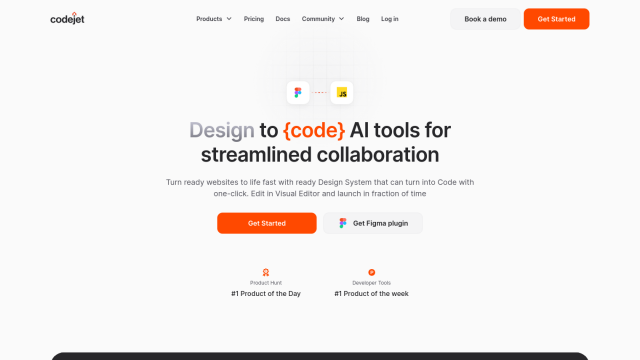
Codejet
If you need a direct design-to-code conversion, Codejet offers a Design System hub and AI Code Generation. It links designers and developers by turning Figma designs into code as soon as they're created. The service includes a Visual Editor for fine-tuning and a Figma Plugin Assistant to ensure compatibility. Codejet also offers one-click deployment to custom domains and a range of pricing plans, so it's available to suit your needs.

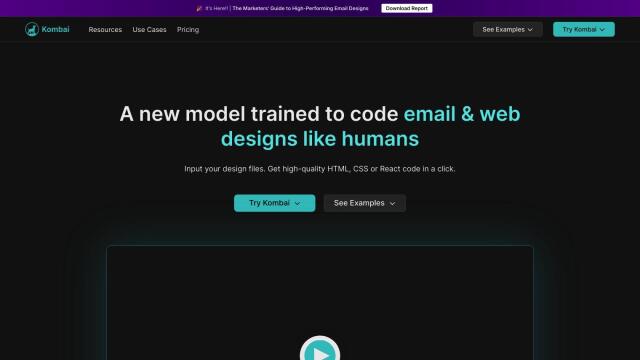
Kombai
Last, Kombai automates the handoff process by turning Figma designs into accurate front-end code. It can produce React or HTML + CSS output, and it can be connected to other frameworks. It also offers flexible CSS and high-quality JavaScript code. Kombai's design prompt engineering feature lets you customize the output, so it's a good choice for generating high-quality code quickly.

